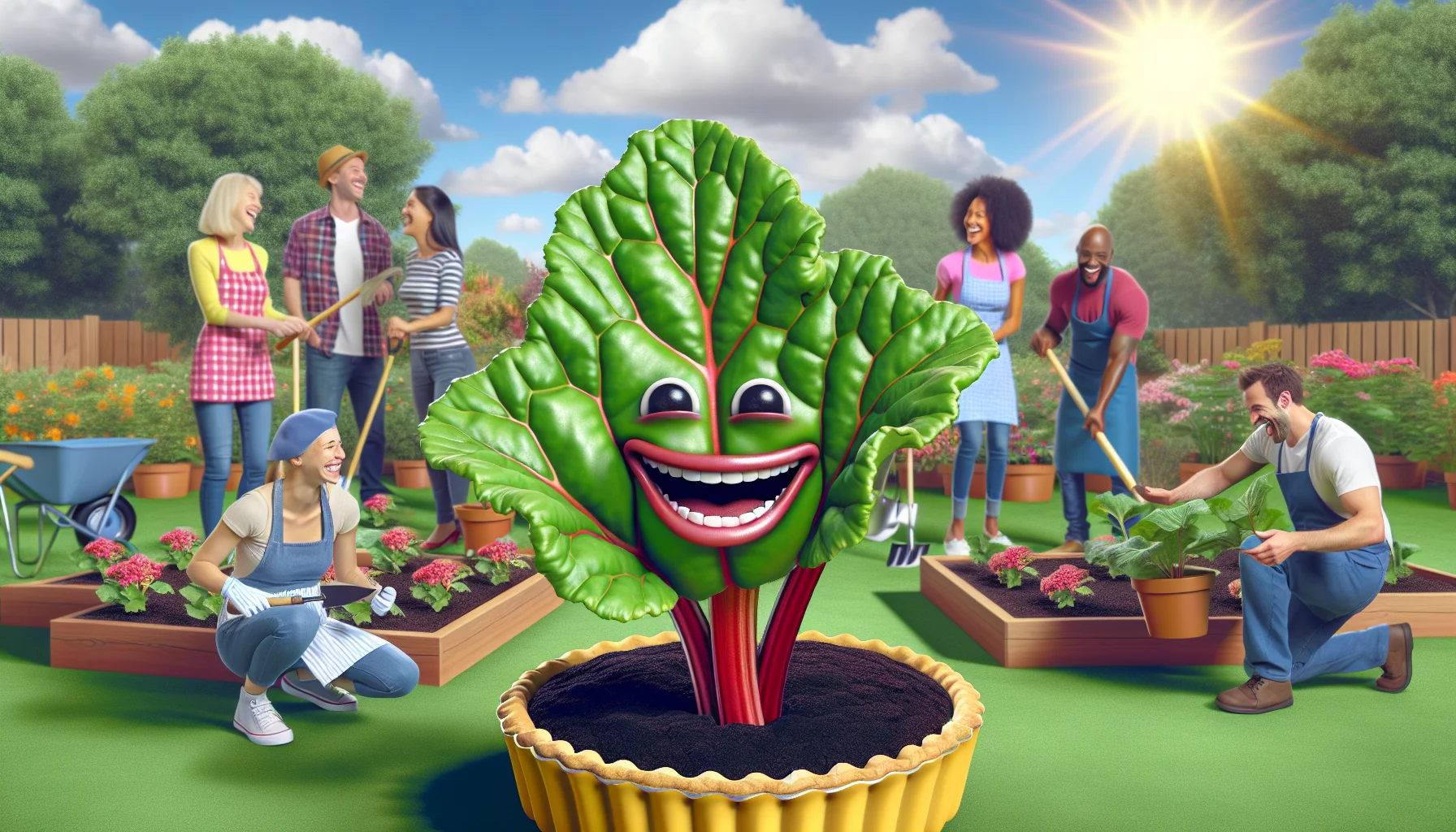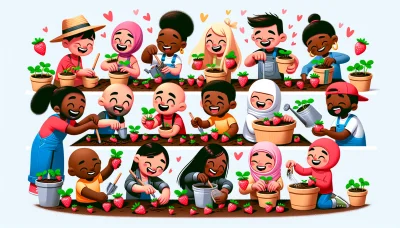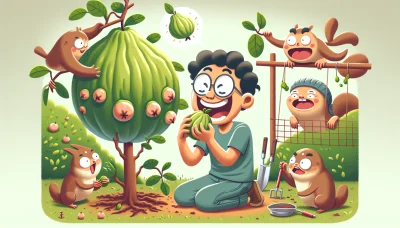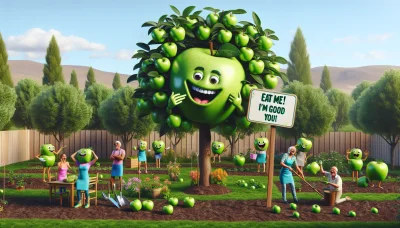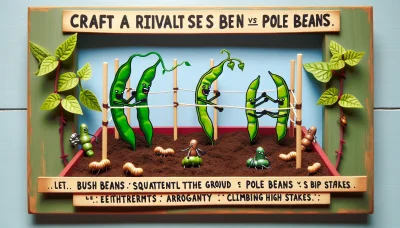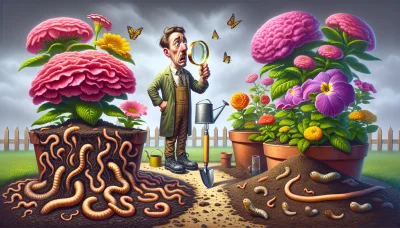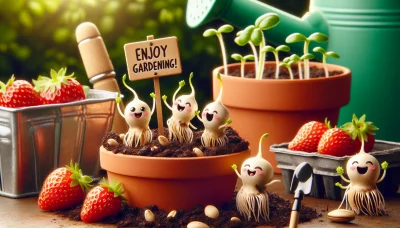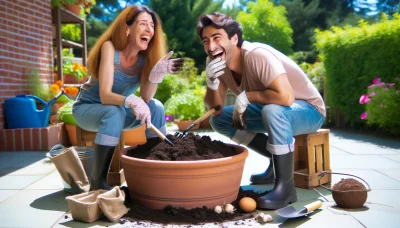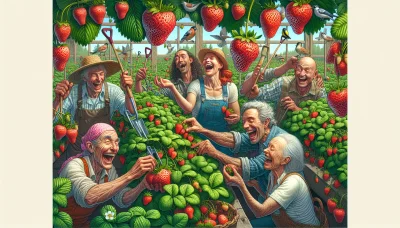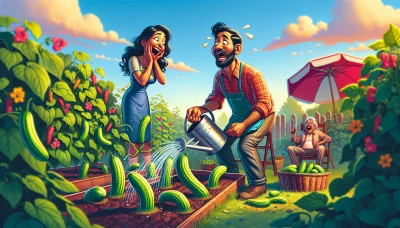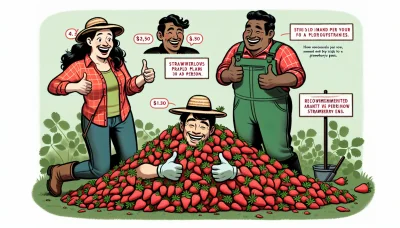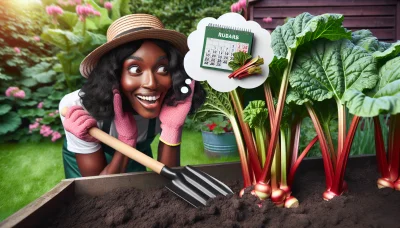Pie plant Quiz
Test Your Knowledge
Question of
Understanding Pie Plant: A Gardener's Guide
The Pie Plant, commonly known as Rhubarb, is a perennial vegetable that has found its niche both in the culinary world and in gardening. Characterized by its large leaves and thick, red stalks, Rhubarb is primarily grown for its edible stalks, which have a tart flavor. This unique taste makes it a popular ingredient in pies, jams, and desserts, earning it the affectionate nickname "pie plant." In gardening, Rhubarb is appreciated for its ease of care and its ability to return year after year, offering both aesthetic appeal with its striking appearance and practical benefits through its harvest. It thrives in cooler climates and, with proper care, can be a rewarding addition to any garden.
The History of Pie Plant
The history of the pie plant, more commonly known today as rhubarb, is as rich and varied as its culinary uses. Originating in Asia over 2,000 years ago, rhubarb was initially cultivated for its medicinal qualities, particularly for its ability to soothe digestive ailments. It wasn't until the 18th century that rhubarb made its way into European gardens, transforming from a medicinal herb into a beloved garden vegetable. This transition marked the beginning of rhubarb's journey into culinary history, eventually becoming a staple ingredient in pies, hence the affectionate nickname "pie plant." Its tart flavor, which pairs wonderfully with sweet fruits and sugar, has secured its place in kitchens around the world. From its humble beginnings as a medicinal plant to its current status as a garden favorite, the pie plant has a fascinating history that reflects its versatility and enduring appeal.
How to Grow Pie Plant in Your Garden
- Choosing the Right Location: Select a sunny spot with well-drained soil. Pie plant thrives in areas that receive at least 6 hours of sunlight per day.
- Soil Preparation: Ensure the soil is rich in organic matter. The ideal pH for pie plant soil is between 6.0 and 6.8. Amend the soil with compost before planting to improve fertility and drainage.
- Planting: Plant crowns in early spring as soon as the soil is workable. Dig holes that are wide enough to accommodate the roots and about 2 inches deep. Space the crowns about 3 feet apart to give each plant ample room to grow.
- Watering: Water the plants thoroughly after planting. Maintain consistent moisture, especially during the first year of growth. Pie plant requires about 1 inch of water per week, either from rainfall or supplemental watering.
- Mulching: Apply a layer of mulch around the plants to retain soil moisture and suppress weeds. Use organic mulch like straw or wood chips.
- Fertilizing: Feed the plants with a balanced, all-purpose fertilizer in early spring each year. Avoid over-fertilizing, which can lead to excessive leaf growth at the expense of the edible stalks.
- Harvesting: Wait until the second year to harvest stalks, to allow the plants to establish themselves. Harvest in spring when the stalks are about 12 inches long by gently twisting and pulling them from the base of the plant. Leave at least two stalks on each plant to ensure continued growth.
- Winter Care: After the first frost in the fall, cut back the leaves to the ground to help prevent disease. Apply a thick layer of mulch to protect the crowns during the winter months.
Common Challenges in Growing Pie Plant
Growing pie plant, commonly known as rhubarb, presents several challenges that gardeners need to navigate to ensure a healthy and productive crop. One of the most common issues is crown rot, a condition caused by poor drainage or overly wet conditions, leading to the decay of the plant's base. To prevent this, it's crucial to plant rhubarb in well-drained soil and avoid overwatering. Another challenge is bolting, where the plant starts to flower and seed prematurely, diverting energy away from stalk development. This is often triggered by fluctuations in temperature. To mitigate bolting, remove any flower stalks as soon as they appear to direct the plant's energy back into stalk growth. By addressing these challenges with proper care and preventive measures, gardeners can enjoy a bountiful harvest of pie plant.
Harvesting and Storing Pie Plant
The best practices for harvesting pie plant, also known as rhubarb, involve waiting until the stalks reach a length of at least 10 inches to ensure they are mature enough to harvest. It is typically recommended to harvest pie plant stalks in late spring through early summer, as this is when they are at their peak in terms of flavor and texture. When harvesting, gently twist and pull the stalks from the base of the plant. Avoid cutting them to prevent damage to the plant. To store the harvested stalks, first remove the leaves, as they are toxic and should not be consumed. Then, wrap the stalks in a damp paper towel and place them in a plastic bag in the refrigerator. This method will help keep them fresh for up to two weeks. For longer storage, pie plant stalks can be cut into pieces and frozen for future use.
Delicious Pie Plant Recipes for Gardeners
- Classic Rhubarb Pie: A timeless dessert that balances the tartness of pie plant with a sweet, flaky crust.
- Rhubarb and Strawberry Jam: Combine these two fruits for a delicious spread that's perfect on toast or scones.
- Savory Rhubarb Lentil Curry: An unexpected twist on traditional curry, adding a tangy flavor that complements the spices.
- Rhubarb Upside-Down Cake: A moist cake with caramelized rhubarb on top, perfect for a summer treat.
- Rhubarb Muffins: Start your day with these slightly tart, yet sweet muffins. Great for breakfast or a snack.
- Roasted Rhubarb and Goat Cheese Salad: A sophisticated salad with the perfect balance of flavors, ideal for impressing guests.
- Rhubarb Chutney: A versatile condiment that pairs well with cheese, meats, or as a glaze for roasting.
The Environmental Benefits of Growing Pie Plant
Cultivating pie plant, commonly known as rhubarb, can significantly contribute to environmental sustainability. By integrating this plant into gardens, biodiversity is enhanced as it attracts beneficial insects and pollinators, creating a more resilient ecosystem. Additionally, pie plant can improve soil health through its deep roots, which aerate the soil and prevent erosion. These roots also draw up nutrients from deeper soil layers, making them available to other plants and enriching the soil. Moreover, pie plant is a perennial, reducing the need for annual replanting and thus offering a sustainable gardening practice that minimizes soil disturbance and conserves resources. Overall, growing pie plant is a step towards creating more sustainable and eco-friendly gardening practices.
